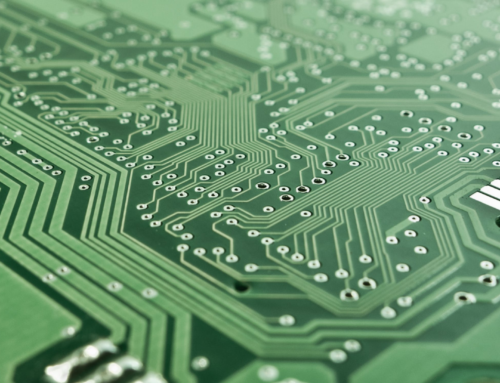What will 2017 hold in store for the world of IT? Well, some say the biggest predictor of the future is a quick look at the past. That’s why we’ve recapped some of the biggest IT and network stories from 2016 and wrapped it all up with a few prognostications for the New Year.
Cyber Security Breaches
2016 was the year of big breaches, with the second half of the year in particular seeing the revelation of some pretty unforgettable security breaches. Making cyber security not only one of the hottest trending topics of 2016 but moving increased network security efforts to the top of the list for 2017.
September 2016:
Ironically, KrebsOnSecurity’s website (a site focused exclusively on computer and network security) gets hit by Mirai malware, exploiting unsecured IoT devices in what Krebs calls “an extremely large and unusual (620Gb/s) distributed denial-of-service (DDoS) attack designed to knock the site offline…by a very large botnet of hacked devices.”
Yahoo revealed two major, formerly undisclosed security breaches from 2014 (500 million compromised accounts) and 2013 (1 billion user accounts!)
October 2016:
Mirai strikes again, this time targeting major internet players like Twitter and Netflix and causing disruptions through a DDoS attack using unsecured IoT devices once again this time to query a DNS provider.
December 2016:
The Department of Homeland Security and the FBI released a joint report confirming suspicions voiced by the DNC back in June that they had been hacked, allegedly by the Russians, in an effort to influence the outcome of the 2016 Presidential election.
Digital Ready Networks
Cisco’s answer to the increasing complexity of network infrastructures (including the expanding threat landscape and the aforementioned proliferation of sophisticated security attacks) and growing consumer demands, was to announce that it wanted to be the foundation for a digital-ready networks transition.
Back in March, Cisco launched the Digital Network Architecture (Cisco DNA), designed as a new networking approach for the digital era. Built from the ground up to be flexible, programmable and open, according to Cisco this new horizon in networking seeks to move networks “away from hardware-centric to software-driven, from manual to automated, and from reactive to adaptive.”
At Cisco Live in Las Vegas, CEO Chuck Robbins named what he called “the four pillars of digital transformation projects: analytics, security, collaboration and automation.”
High-Profile Mergers
Dell acquired EMC and its federation companies (including VMware, Pivotal, and RSA) for a reported $67 billion acquisition. With both the hardware and software to power traditional data centers, as well as the promise of new hybrid cloud environments, this joint company has been looking to quickly make strides pairing Dell servers with EMC storage technology and VMware virtualization software.
Broadcom nabbed Brocade and immediately announced it was going to sell off its networking assets (including routing and switching technology, virtualization software, and the Ruckus Wireless business—all which is valued at roughly $2.2 billion in total) but they will still retain Brocade’s Fibre Channel SAN switching.
Extreme Networks acquired Zebra Technologies’ WLAN business for $55 million, leaving the standalone WLAN vendor pool looking a bit thin.
Cloud Computing and Virtualization
This last year proved to be particularly newsworthy when it came to cloud technology and virtualization news. We saw Amazon Web Services, Microsoft Azure and Google pitted against one another in a grudge match to attract enterprise users. And while multi-cloud is still slowly picking up steam, Dell Cloud Manager discreetly pulled the plug on its nearly nonexistent brokerage service customer base after two years.
Cloud Outages:
Google Compute Engine had one of the most widespread outages ever experienced by a public cloud provider, clocking in at 18 minutes in all regions due to a networking failure. Google has since added new safeguards.
Public cloud shutdowns:
Dell, Hewlett Packard Enterprise, and Verizon all announced closings of their public clouds (Verizon is said to be refocusing its efforts on private cloud services).
Telco Virtualization:
Major telco companies, AT&T and Verizon, both announced efforts to virtualize their networks in March and April of 2016, with AT& T unveiling its Enhanced Control, Orchestration, Management, and Policy (ECOMP) platform, while Verizon released its SDN-NFV Reference Architecture document.
What’s ahead for 2017
Many of the events of 2016 won’t soon be forgotten and are certain to lay the groundwork for how we’ll all move forward in 2017. Here’s how we see it all shaking out:
Expect cyber security to be at the forefront of things. Security suite trends and just the sheer amount of work necessary to truly secure your networks, while conserving valuable IT employee time for more sophisticated tasks, will fuel the growing need for IT automation.
Look for IT networks to go next level this year, driving the very heart of business strategy (as well as city planning) armed with smart city technologies and the guiding principles of the four pillars (analytics, security, collaboration and automation) to establish the future of networking.
Mobility, IoTs, and 2016’s mergers and closures and their byproducts will continue to birth new integrative innovations in cloud computing, virtualization, and automation.
Whatever 2017 brings, for IT professionals, it always pays to stay nimble and ahead of the game by continuing to expand your skillsets with additional training and by keeping tabs on current trends and future plans in the world of IT networking.
Happy New Year!




